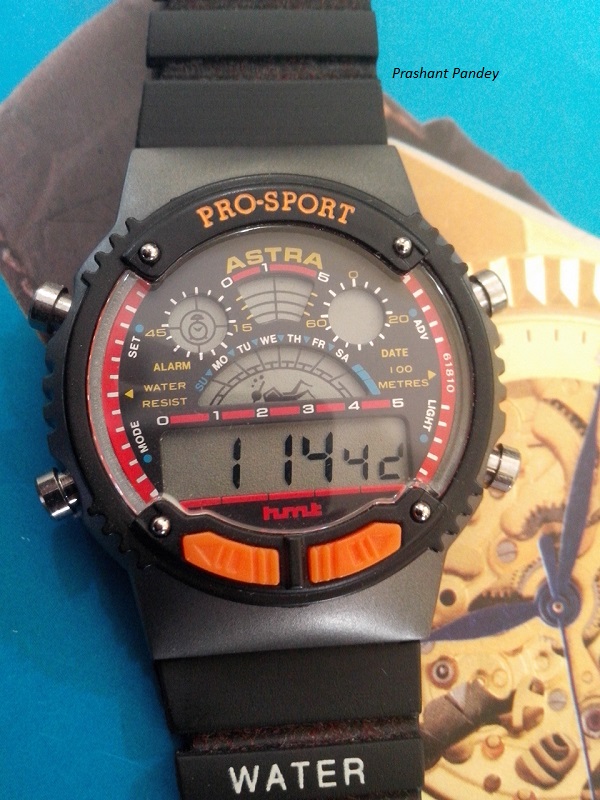If you’ve been to Bangalore’s Lal Bagh gardens, chances are you’ve probably seen the iconic 7-metre wide Floral Clock set that sits in the lawns just as you enter the main gate:

Pic – indiamike
That clock was made by HMT Watches, a government owned subsidiary of the Hindustan Machine Tools company, that is now being shut down after more than 5 decades of its existence.
If the name sounds familiar, it should—HMT Watches were market leaders in watch manufacturing and sales, being the first to introduce a multitude of models and different kinds of watches into India. One model, called ‘Kanchan’ was even known as the ‘dowry watch’, simply because entire weddings would be put on hold until the watch was made a part of the marriage agreement.

Pic – icultist | Flickr
Our grandfathers would sport HMTs, not because it was a status symbol, but because it was a home-grown piece of manufacturing that actually worked and stood the test of time, much like the Hindustan Ambassador, which was also recently killed.
Started in collaboration with Japan’s Citizen Watches in 1961, HMT Watches were once the epitome of precision manufacturing and production. The following video, that was made in the 1970s, documents their rise to fame and the way they handled their production:
From clock towers to temple clocks, to the HMT Bhavan on Bellary Road in Bangalore, HMT Watches were literally everywhere:

The HMT clock at Chamundeshwari Temple, near Mysore
Pic – Ryan | Flickr
However, HMT’s dominance was slowly encroached upon by newer companies with newer technology in the 1980s, and even capital infusion into the company couldn’t turn the odds back to their favour. They constantly reported ever-growing losses, that last of which came in 2012-13, which saw the company incurlosses of Rs. 242.47 crores.
The shutting down of HMT Watches isn’t about the loss of just another company. It’s about the death of an iconic symbol in Indian history, the final breath of a once-great entity that people related to; the death of the “time keepers to the nation”.
1. HMT Watches were the first company to introduce Quartz watches into the Indian watch market. Yet, HMT is still one of the only remaining watch makers to regularly use mechanical components in their watches.
2. They were also the first to introduce Braille watches.
3. Indian movie star Sunny Deol still wears an HMT Watch, even though he has to wind it up every day.
4. The last HMT store is in Delhi’s Connaught Place.
5. HMT’s first watches were released by then Prime Minister Jawaharlal Nehru.
Watch-lovers in India are in despair, now that it is clear that the iconic Indian watch brand, HMT, will soon be shutting down. Set up in 1961, HMT is a state-owned manufacturer that collaborated with Japan’s Citizen Watches to produce a range of watches that Indians were proud to sport. But the company, headquartered in Bangalore, has been making losses since 2000. This week, the government decided to shut HMT Watches and HMT Chinar Watches down on the recommendation of the Board for Reconstruction of Public Sector Enterprises.
A HMT watch was an integral part of the unofficial uniform of Indian office-goers through the ‘60s, ‘70s and ‘80s. Even today collectors of HMT timepieces swear by the brand’s retro appeal, its reliability and its undeniably Indian flavour.

When online retailer Flipkart started selling HMT watches, the more popular models were sold out within minutes of listing it on the website, say watch collectors. HMT Watches started its own online sales in mid-August and many believed that this was a sign that the company was turning around. Its advertising slogan, "Timekeepers to the Nation", was certainly apt.
Prashant Pandey, a resident of Bangalore and HMT aficionado, has collected more than 500 pieces in just a few years. “I saw my grandfather wear a HMT watch,” he said. “My wife’s grandfather had a Pilot, which he passed on to me. There’s a lot of emotional attachment to these watches. I am shattered. This is a legacy coming to an end.”
This 1977 video from the Films Division explains the making of that legacy.
And here are some iconic designs of HMT Watches.
Janata

Among the first watches to be made by HMT, the Janata was a favourite of Prime Minister Indira Gandhi. This winding watch was plain, affordable and had more than 25 variants. Janata watches have been known to tick on for more than 40 years.
Pilot

The Pilot, along with Jawan, Sainik and Rakshak, were synonymous with the military. Though these were not specialised military watches, they were supplied to the Indian Army, Air Force and Navy, which were HMT’s biggest customers. The Pilot is a favourite of watch collectors.
Sona

The quintessential dress watch, the Sona was a winding watch and the thinnest model made by HMT. It is known for its high-quality gold plating.
Kanchan

This automatic model was also known as the "dowry watch". Pandey recounts stories he has heard of people lining up outside HMT showrooms as early as 5 am with letters from various political leaders recommending that a Kanchan watch be given to the bearer of the letter. “If there was no Kanchan watch then the marriage would not happen,” said Pandey.
Astra

The Astra was the first HMT watch with a digital chronograph, a stopwatch combined with the display. Buyers were willing to pay a lot more than company price to get their hands on it.
Old HMT watches are still in high demand among collectors. Pandey runs a blog to help HMT watch seekers avoid getting fleeced in the online market and says he gets a large number of requests for help to find Pilot watches. The key to the HMT watch, Pandey says, is that it looks like “a new antique”.











